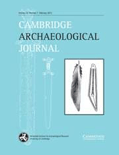
CAMBRIDGE ARCHAEOLOGICAL JOURNAL
Scope & Guideline
Advancing Knowledge in Archaeology and Culture
Introduction
Aims and Scopes
- Interdisciplinary Approaches to Archaeology:
The journal promotes research that integrates various disciplines such as anthropology, history, and art history to provide a comprehensive understanding of archaeological findings. - Material Culture Studies:
A key focus is on the analysis of artifacts and material culture, examining how objects inform us about social practices, identities, and cultural transformations. - Social Dynamics and Identity:
Research often explores social organization, identity formation, and the role of communities in shaping archaeological narratives, particularly through the lens of gender, ethnicity, and power dynamics. - Methodological Innovation:
The journal encourages the use of cutting-edge methodologies, including digital archaeology, material analysis, and theoretical frameworks such as posthumanism and new materialism. - Cultural Heritage and Ethics:
A consistent theme involves discussions on the ethics of archaeological practice, cultural heritage management, and the implications of archaeology for contemporary society.
Trending and Emerging
- Posthumanism and New Materialism:
There is a growing interest in posthumanist perspectives that challenge anthropocentric views in archaeology, emphasizing the agency of non-human actors and material culture in shaping human experiences. - Indigenous and Decolonial Approaches:
Emerging themes include the incorporation of indigenous knowledge systems and decolonial frameworks, which aim to address historical injustices and promote collaborative research practices. - Cognitive and Emotional Archaeology:
Research increasingly explores cognitive processes and emotional engagements with material culture, offering insights into how past societies understood and interacted with their world. - Environmental Archaeology and Climate Change:
A notable trend is the integration of environmental archaeology with discussions on climate change, focusing on human-environment interactions and the implications for future sustainability. - Social Networks and Connectivity:
There is an emphasis on studying social networks and connectivity in ancient societies, utilizing methodologies like network analysis to understand interactions across regions and cultures.
Declining or Waning
- Traditional Typological Studies:
There has been a noticeable decline in papers focused solely on traditional typological classifications of artifacts, suggesting a shift towards more contextual and relational analyses. - Overemphasis on Chronological Frameworks:
Research that heavily relies on strict chronological frameworks without considering broader cultural and social contexts appears to be decreasing, as scholars increasingly favor integrative approaches. - Regional Studies with Limited Scope:
Papers focusing narrowly on specific regions without connecting to broader global or comparative contexts have become less common, reflecting a trend towards more integrative and transnational studies. - Historical Archaeology in Isolation:
The focus on historical archaeology as a standalone discipline, without its connections to contemporary issues or broader archaeological methodologies, seems to be waning. - Conventional Artifact Functionality Studies:
There is a diminishing interest in studies that only address artifact functionality without examining their social, cultural, or symbolic meanings.
Similar Journals
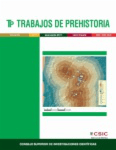
Trabajos de Prehistoria
Fostering Global Dialogue in Archaeology and PrehistoryTrabajos de Prehistoria is a distinguished peer-reviewed journal published by the Consejo Superior de Investigaciones Científicas (CSIC) since 1988, and it has established itself as a vital resource in the field of archaeology and prehistory. With an impressive impact factor and an open access policy, the journal aims to disseminate high-quality research that contributes to the understanding of human history and prehistorical studies. This Spanish journal has consistently ranked in the top quartile (Q1) in both the Arts and Humanities and Social Sciences categories, reflecting its significance in advancing archaeological scholarship, with Scopus rankings placing it in the 85th percentile among its peers. Covering a broad scope of topics related to archaeology, it serves as a platform for innovative research that connects researchers, professionals, and students globally, enhancing academic dialogue and fostering interdisciplinary collaboration. Based in Madrid, European researchers and global academics alike benefit from its open access model, promoting wider distribution and accessibility of foundational studies in the field.

Fornvannen-Journal of Swedish Antiquarian Research
Showcasing Scholarly Excellence in Antiquarian StudiesFornvannen - Journal of Swedish Antiquarian Research is a distinguished peer-reviewed journal dedicated to advancing the field of antiquarian studies through rigorous research and scholarship. Published by the Royal Academy Letters, History & Antiquities in Sweden, this journal has been a cornerstone of archaeological and historical discourse since its inception in 1978. It currently holds an esteemed position in the Q3 category in both Archaeology and History as per the 2023 assessments, reflecting its commitment to promoting high-quality academic contributions. With an ISSN of 0015-7813 and an E-ISSN of 1404-9430, Fornvannen provides insights into Swedish antiquities and serves as a vital resource for researchers and scholars eager to explore the nuances of archaeological and historical findings. Although not an open-access journal, it offers a comprehensive platform for the dissemination of knowledge within the fields of arts and humanities. As it continues its journey from 2011 to 2024, Fornvannen remains pivotal in fostering scholarly dialogue and enhancing our understanding of Sweden’s rich historical tapestry.
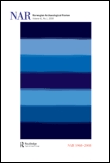
Norwegian Archaeological Review
Exploring the Past, Illuminating the FutureNorwegian Archaeological Review, published by Routledge Journals, Taylor & Francis Ltd, is a leading interdisciplinary journal that has made significant contributions to the field of archaeology since its inception in 1968. With an impressive Q1 ranking in the Arts and Humanities category for archaeology and an 86th percentile ranking in Scopus, this journal serves as a crucial platform for showcasing innovative research that advances our understanding of human history and cultural heritage. The Review provides a diverse range of scholarly articles, critical reviews, and thoughtful discussions, making it an essential resource for researchers, professionals, and students alike. While the journal currently does not offer an open-access option, it continues to maintain high editorial standards and relevance within the academic community, with publication converging up to 2024. The Norwegian Archaeological Review thrives as a nexus for academic discourse, encouraging the exploration of archaeological methodology, theory, and practice against the backdrop of contemporary global challenges.

Cuadernos de Prehistoria y Arqueologia-Universidad Autonoma de Madrid
Exploring the Depths of Human HistoryCuadernos de Prehistoria y Arqueologia-Universidad Autonoma de Madrid is a distinguished academic journal dedicated to the fields of archaeology and prehistory, published by the Universidad Autonoma de Madrid, Departamento de Prehistoria y Arqueología. With an ISSN of 0211-1608, this journal plays a crucial role in disseminating significant research findings and theoretical advancements within these domains. Recognized for its scholarly excellence, it holds impressive quartile rankings in 2023, including Q2 in Archaeology and Q1 in History, reflecting its high impact within the academic community. While currently not an open-access publication, Cuadernos de Prehistoria y Arqueologia provides valuable insights to researchers, professionals, and students engaged in the exploration of human history and cultural heritage from 2018 to 2024 and beyond. With a commitment to fostering interdisciplinary dialogue, this journal serves as an essential platform for innovative studies and comprehensive reviews, contributing to the advancement of knowledge in archaeology and prehistory.

PROCEEDINGS OF THE ROYAL IRISH ACADEMY SECTION C-ARCHAEOLOGY CELTIC STUDIES HISTORY LINGUISTICS LITERATURE
Charting New Territories in Celtic StudiesPROCEEDINGS OF THE ROYAL IRISH ACADEMY SECTION C - ARCHAEOLOGY, CELTIC STUDIES, HISTORY, LINGUISTICS, LITERATURE is a distinguished academic journal published by the Royal Irish Academy, based in Dublin, Ireland. With a focus that spans vital areas of research including archaeology, Celtic studies, history, linguistics, and literature, this journal plays a crucial role in the dissemination of scholarly work that enriches our understanding of these interconnected fields. The journal holds an impressive standing in academia, featuring prominently in several Scopus categories, with a Q1 ranking in Literature and Literary Theory, highlighting its significant impact and relevance. Although currently not open access, it assures potential readers of the rigor and quality upheld in its publications through selective peer-review processes. This journal serves as an essential resource for researchers, professionals, and students alike, eager to engage with innovative studies and discussions that underpin Ireland's cultural and historical heritage.
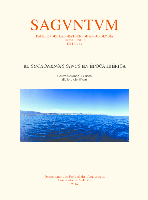
SAGVNTVM-Papeles del Laboratorio de Arqueologia de Valencia
Exploring the Depths of History through Rigorous Research.SAGVNTVM-Papeles del Laboratorio de Arqueologia de Valencia is an esteemed open-access journal dedicated to advancing the field of archaeology, published by the Department of Prehistory and Archaeology at the University of Valencia, Spain. With an ISSN of 0210-3729 and an E-ISSN of 2174-517X, the journal has been a vital resource for scholars since its inception in 1962, ensuring that high-quality archaeological research is readily available to the global academic community. Notably, it holds a distinguished Q2 ranking in both Archeology and Archeology within the arts and humanities categories as of 2023, reflecting its commitment to rigorous scholarship and significant contributions to the field. The journals' Scopus rankings further affirm its relevance, positioned at #188 of 413 in Arts and Humanities and #179 of 354 in Social Sciences. Researchers and professionals alike can delve into a variety of topics, benefiting from the journal’s rich archive from 2017 to 2023. With a mission to disseminate knowledge and foster dialogue in archaeology, SAGVNTVM serves as an essential platform for investigators, students, and practitioners interested in the latest archaeological findings and methodologies.

Antiquaries Journal
Advancing Knowledge in Antiquarian Studies.The Antiquaries Journal, published by Cambridge University Press, is a prestigious publication dedicated to the multidisciplinary exploration of antiquarian studies, archaeology, history, and the visual arts. With an impact factor reflective of its influence within the academic community, it is essential reading for researchers, professionals, and students alike. This journal serves as a vital platform for disseminating cutting-edge research and scholarly discourse, particularly in its recent categorization within Q1 in Visual Arts and Performing Arts and Q2 in History. The journal spans a rich historical timeline from 1921 to the present, offering unique insights and fostering dialogue in the interrelated fields of archaeology and historical inquiry. While it is not an open-access journal, its commitment to rigorous peer review and academic excellence ensures that the content remains a critical resource for anyone engaged in the study of the past, particularly within the United Kingdom and beyond.

Britannia
Preserving the Past, Inspiring Future GenerationsBrittannia is a prestigious journal published by Cambridge University Press that serves as a cornerstone for scholars and enthusiasts in the fields of Archaeology, Classics, and History. With its ISSN of 0068-113X and E-ISSN of 1753-5352, the journal has been committed to disseminating high-quality research and innovative studies since its inception in 1970, addressing vital topics that span cultural, historical, and archaeological dimensions. As a hallmark of academic rigor, it maintains a Q1 ranking in Classics and History and a Q2 ranking in Archaeology (both Arts and Humanities, 2023), reflecting its impact and significance in these disciplines. Although not an Open Access journal, it provides invaluable content for researchers, professionals, and students alike, ensuring that vital insights into ancient civilizations and cultural heritage resonate well beyond the pages of each issue. With upcoming publications scheduled through 2024, Brittannia continues to be an essential resource for anyone invested in the legacies of the past.
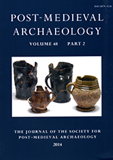
Post-Medieval Archaeology
Advancing Insights into Post-Medieval Material CulturePost-Medieval Archaeology is a distinguished academic journal published by ROUTLEDGE JOURNALS, TAYLOR & FRANCIS LTD, focusing on the rich tapestry of human history from the post-medieval period through the lens of archaeology. With a proud publication history spanning since 1967, this journal addresses the integration of archaeological findings with historical narratives, contributing significantly to the field of archaeology and history. The journal holds an impressive categorization within the Q2 and Q3 quartiles for Archaeology and History in 2023, showcasing its commitment to academic excellence and relevance within these disciplines. Researchers and professionals alike will find value in its critical examinations and innovative methodologies that illuminate the past, making it a pivotal resource for those engaged in archaeological research. As an essential platform for scholarly debate and dissemination, Post-Medieval Archaeology continues to advance the understanding of post-medieval contexts and material culture, fostering discussions that resonate through various areas of the arts, humanities, and social sciences.
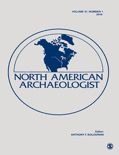
NORTH AMERICAN ARCHAEOLOGIST
Exploring North America's Archaeological TreasuresNORTH AMERICAN ARCHAEOLOGIST, published by SAGE PUBLICATIONS INC, is a prestigious journal that serves as an essential resource for professionals and scholars in the field of archaeology. With its ISSN 0197-6931 and E-ISSN 1541-3543, the journal aims to disseminate high-quality research that contributes to the understanding of the historical and cultural significance of North America from prehistory to the present. As of 2023, it holds an impressive Q2 category in Archaeology and ranks within the Q1 tier for Archaeology (arts and humanities), positioning it among the top journals in its field. Its Scopus rankings further emphasize its significance, reflecting a commendable percentile standing that underscores its influence in both arts and humanities and social sciences. The journal is committed to offering a platform for innovative research and scholarly discussion, making it invaluable for researchers, professionals, and students dedicated to advancing archaeological knowledge.